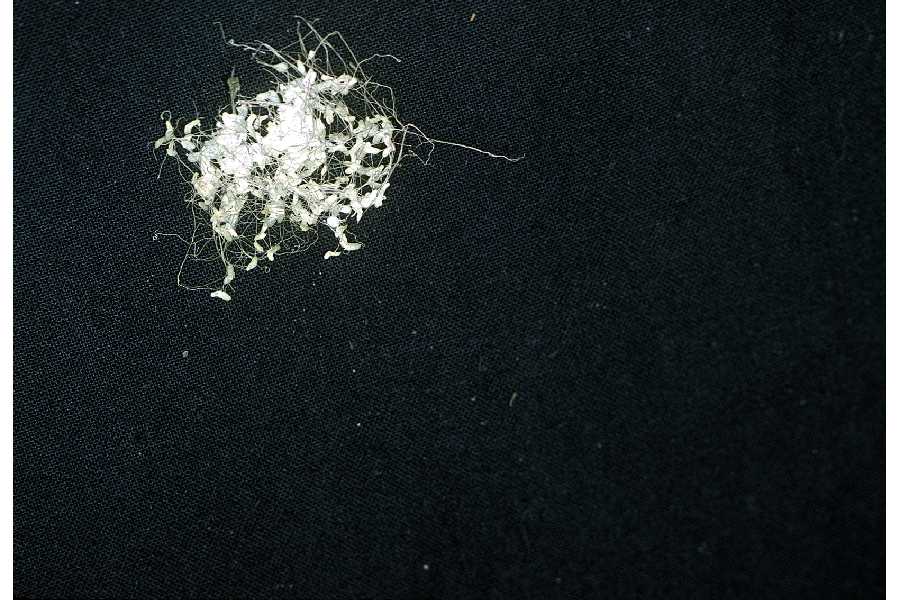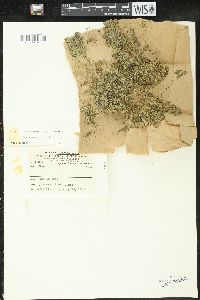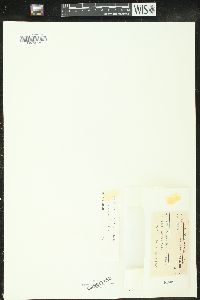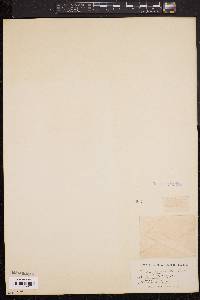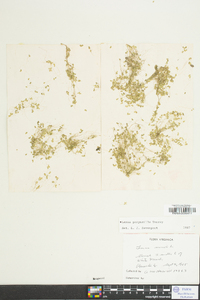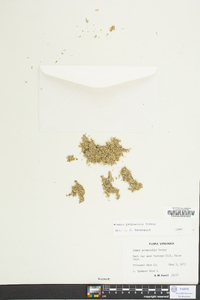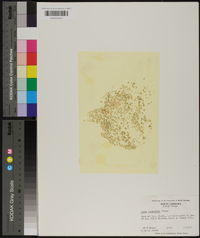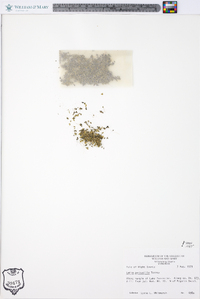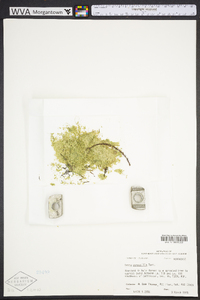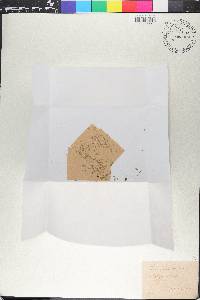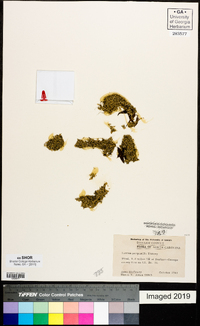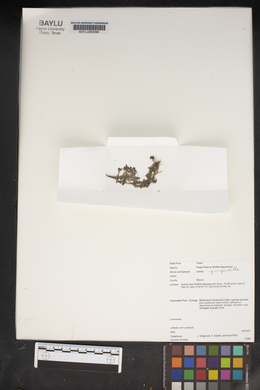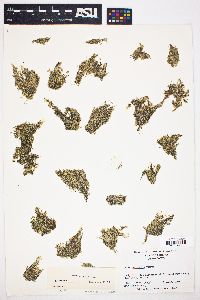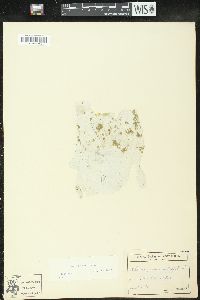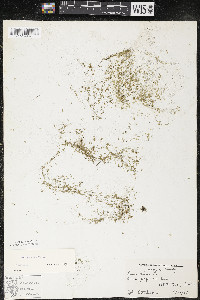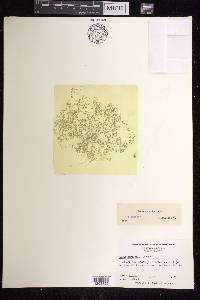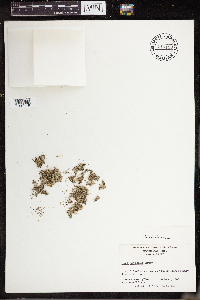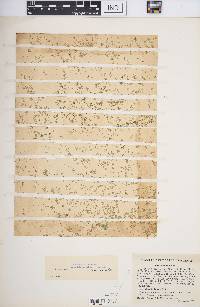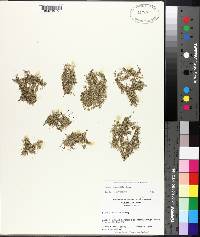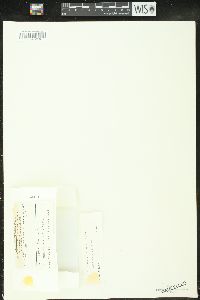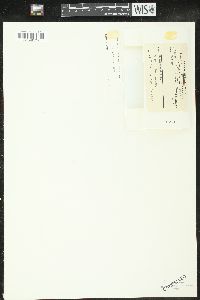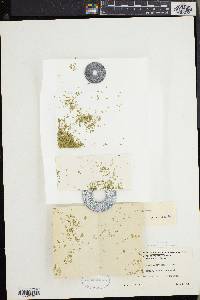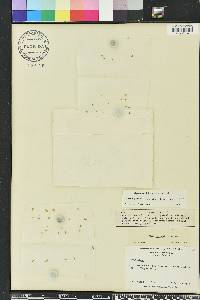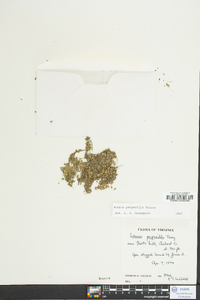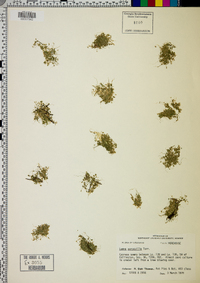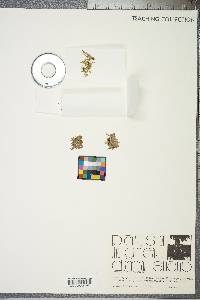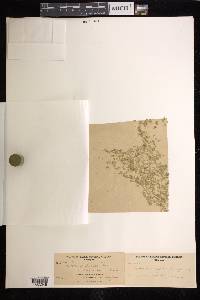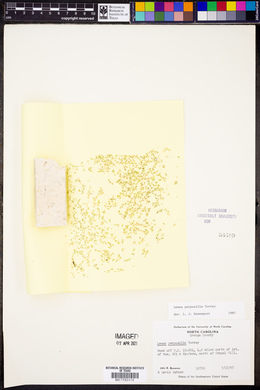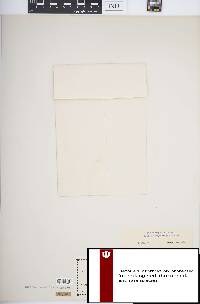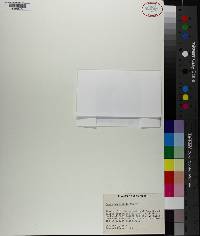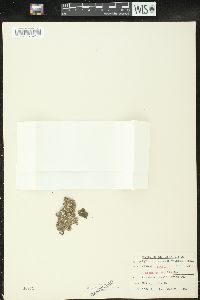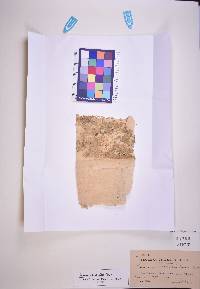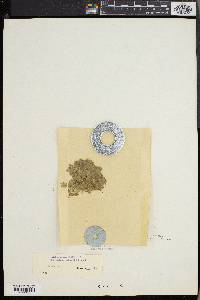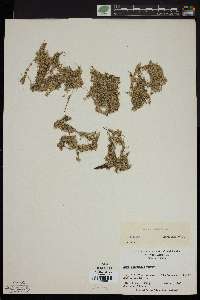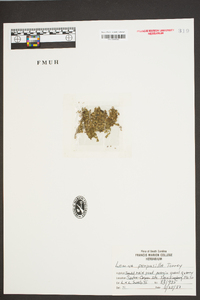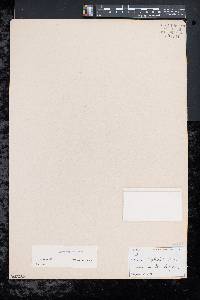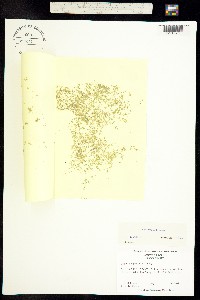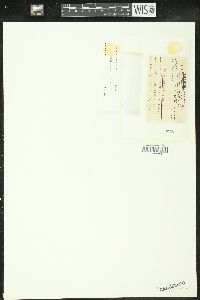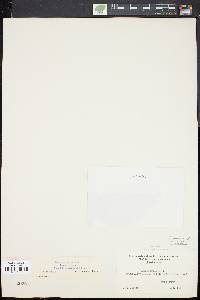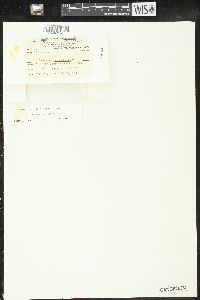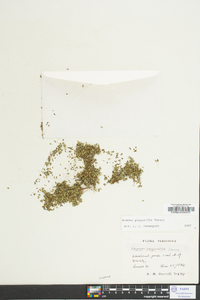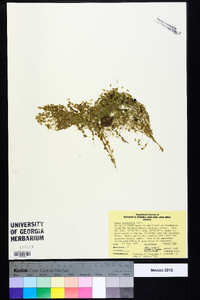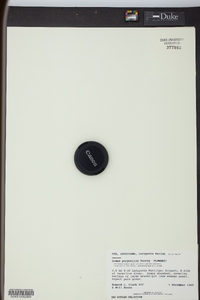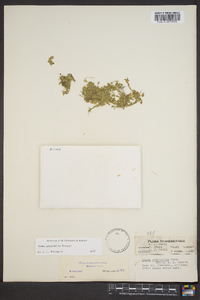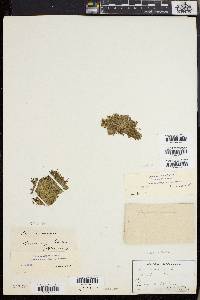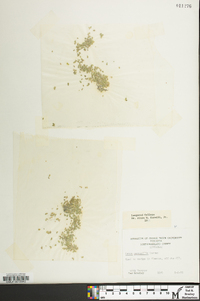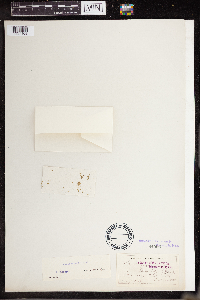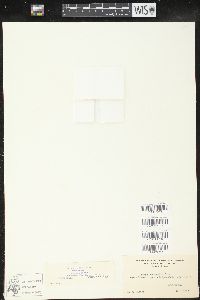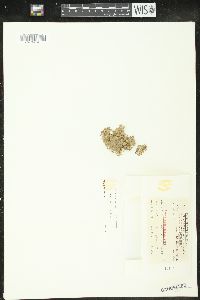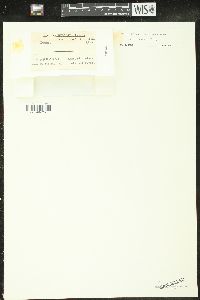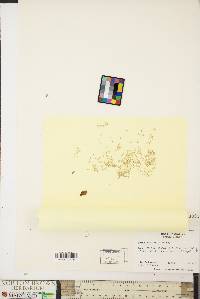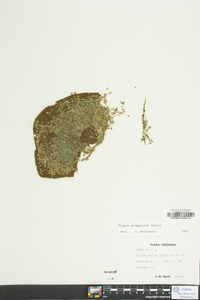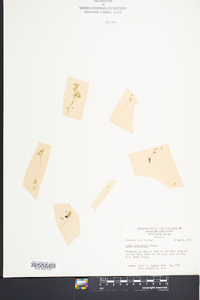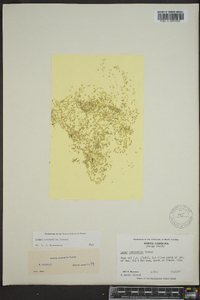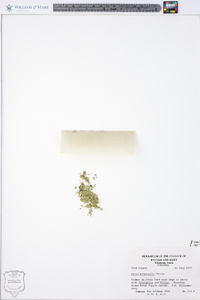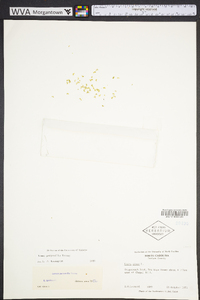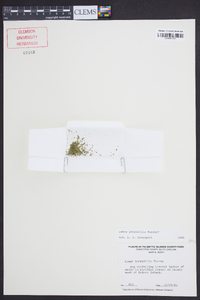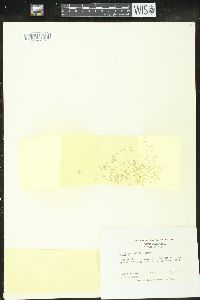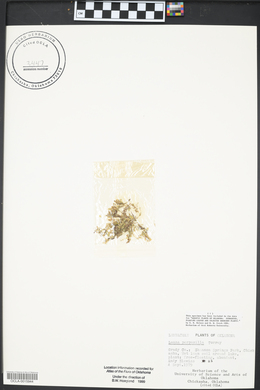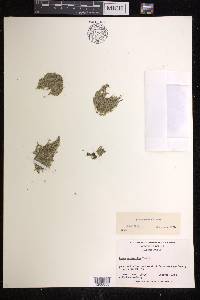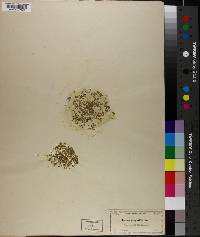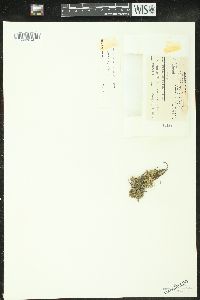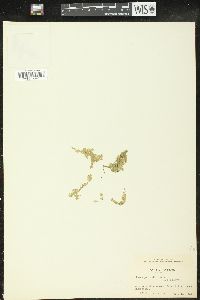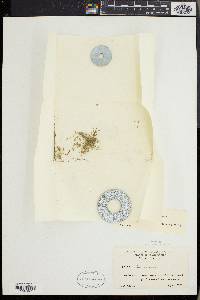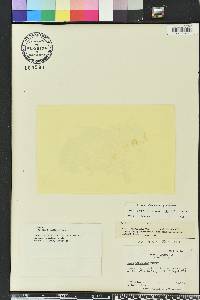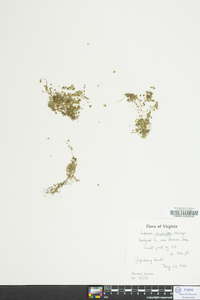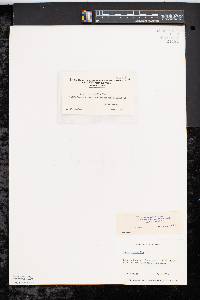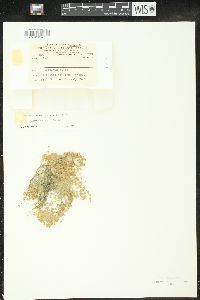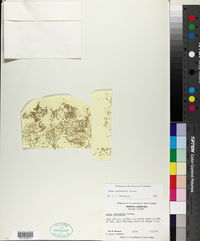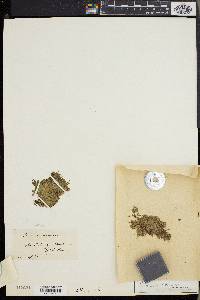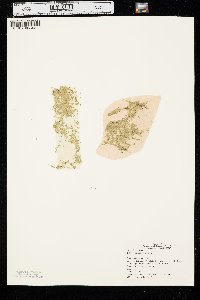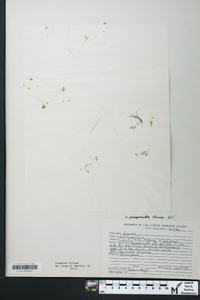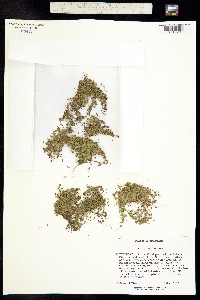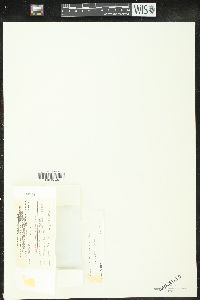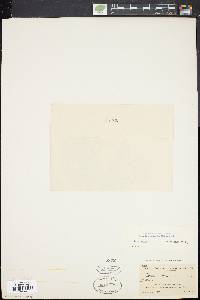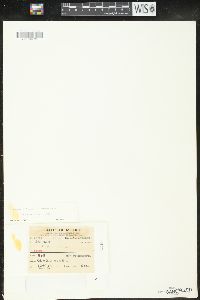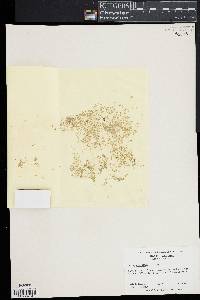Lemna perpusilla
|
|
|
|
Family: Araceae
Minute Duckweed
[Lemna perpusilla var. trinervis Austin] |
Roots to 3.5 cm, tip usually sharp pointed; sheath narrowly winged at base (wing 2--3 times as long as wide). Stipes white, small, often decaying. Fronds floating, 1 or 2--few, coherent in groups, ovate-obovate, flat, 1--4 mm, 1--1.7 times as long as wide, margins entire; veins 3, greatest distance between lateral veins near or distal to middle; 1 distinct papilla near apex on upper surface, 2--3 very distinct papillae above node; anthocyanin absent, no reddish color; air spaces much shorter than 0.3 mm; distinct turions absent. Flowers: ovaries 1-ovulate, utricular scale open on 1 side. Fruits 0.7--1 mm, not winged. Seeds with 35--70 indistinct ribs, staying within fruit wall after ripening. 2n = 40 (U), 42 (G). Flowering (frequent) late spring--fall. Mesotrophic to eutrophic, quiet waters in temperate regions with relatively mild winters; 0--600 m; Que.; Ark., Conn., Del., D.C., Ill., Ind., Iowa, Kans., Ky., Maine, Md., Mass., Minn., Mo., Nebr., N.J., N.Y., N.C., Ohio, Okla., Pa., R.I., Tenn., Tex., Vt., Va., W.Va., Wis. I know of no specimens of Lemna perpusilla from Connecticut or New Hampshire.
Aquatic herb Flowers: occurring frequently, lacking sepals and petals, with two stamens, surrounded by a membraneous scale open along one side. Fruit: bladder-like (utricle), thin-walled, 0.7 - 1 mm long, seeds having 35 - 70 indistinct ribs and remaining within fruit wall after ripening. Roots: to 3.5 cm long with a sharp pointed tip, wing of root sheath two to three times as long as wide. Plant body: not differentiated into stem and leaves, floating or near surface, one to a few attached, green throughout, 1 - 4 mm long, one to one and three-quarters times as long as wide, flattened, egg-shaped to inversely egg-shaped, three-veined, with one distinct projection near tip and one to three larger projections above the root attachment. Air spaces inside the plant body are much shorter than 0.3 mm. Similar species: Lemna aequinoctialis, Lemna perpusilla, Lemna turionifera, and Lemna minor have two to four veins and tend to be wider than 1.5 mm. Lemna turionifera and L. minor can be distinguished from L. perpusilla by having round-tipped roots that are usually longer than 3 cm and plant bodies that are tinged with red. Lemna aequinoctialis has a winged root sheath that is one to two and a half times as long as wide and one projection above the root attachment that is smaller than the projection near the tip. Flowering: late spring to fall Habitat and ecology: Quiet waters. Occurence in the Chicago region: native Etymology: Lemna is the Greek name for a water weed. Perpusilla means "very tiny." Author: The Morton Arboretum Thallus ±convex on both sides, with a prominent papilla at node and apex above, and usually with smaller papillae along the midline, obliquely obovate, asymmetrical and ±falcate, 1-2.5 mm, commonly 1-2 times as long as wide, solitary or up to 5 together, not anthocyanic, with 1-3 obscure nerves or nerveless; root-sheath winged at base (unique in the genus); spathe reduced, open; fr asymmetrical, with a persistent lateral style; seed solitary, ovoid, strongly ribbed; 2n=40. Nearly cosmop., and found in most of our range. (L. trinervis) Gleason, Henry A. & Cronquist, Arthur J. 1991. Manual of vascular plants of northeastern United States and adjacent Canada. lxxv + 910 pp. ©The New York Botanical Garden. All rights reserved. Used by permission. From Flora of Indiana (1940) by Charles C. Deam Known only in the northern third of the state. The only Ohio record is from Mercer County within six miles of Randolph County, Indiana. …… Indiana Coefficient of Conservatism: C = 10 Wetland Indicator Status: OBL |
|
|
|

